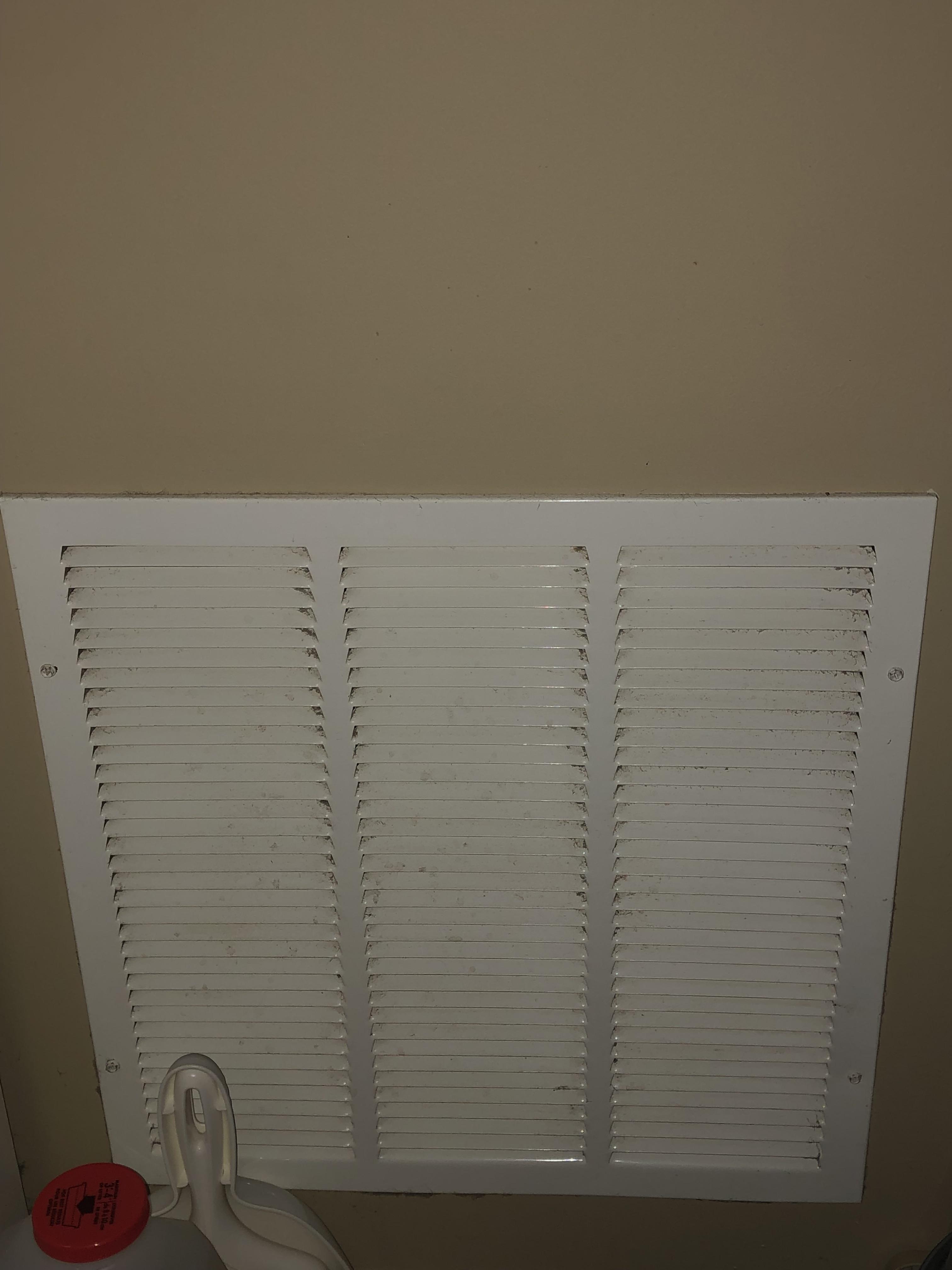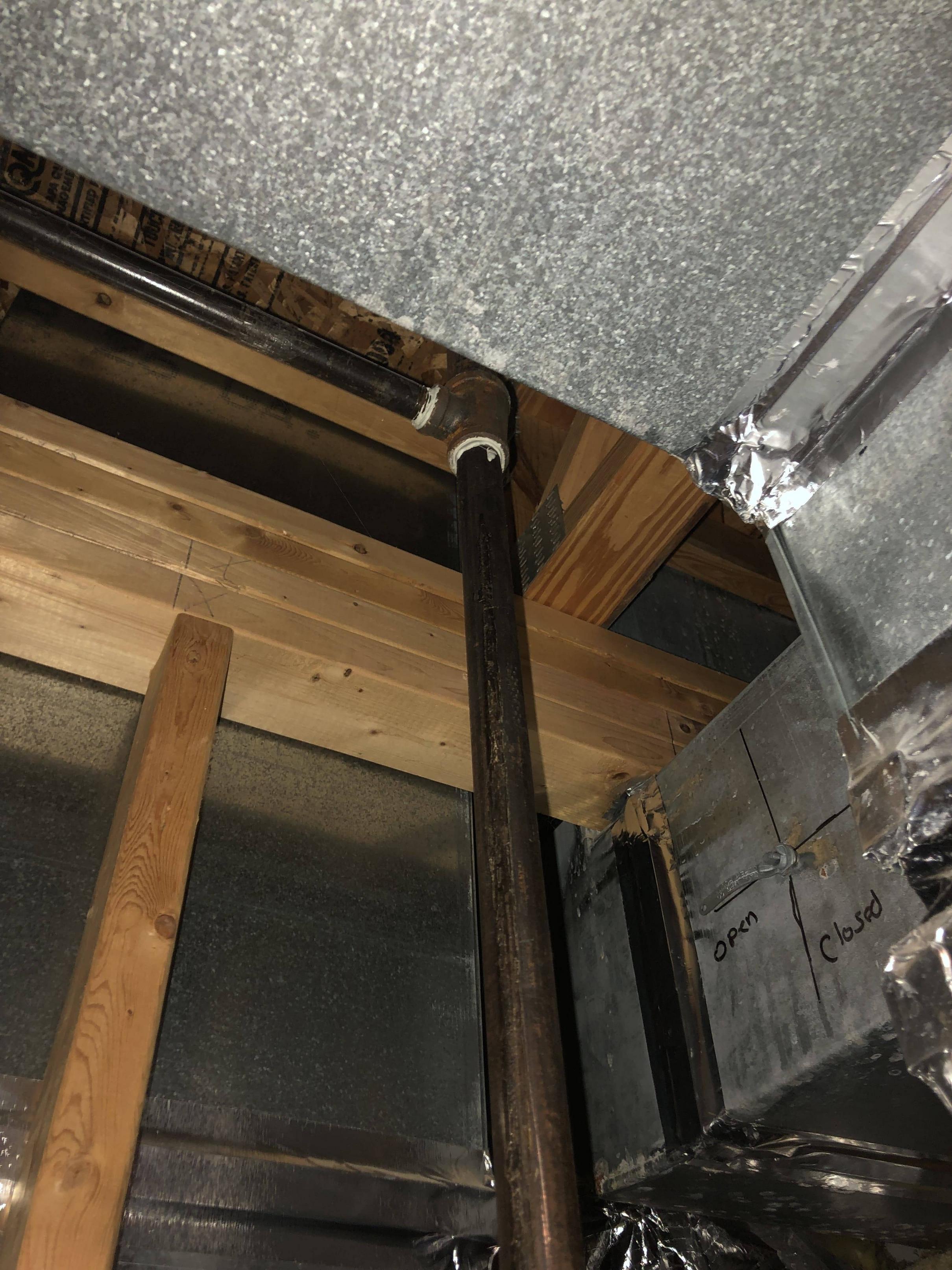In the master bedroom, there is one of four intake vents in the house, and this particular one is very loud.
Our house has two vertical air shafts that run parallel to each other, one for supply and one for return. The intake in the master bedroom is connected directly to the return shaft - no duct between it and the shaft. Directly behind the vent is a 3-story drop straight down into the air handler.
I have held a piece of paper next to the offending intake and the paper gets drawn strongly against it.
I tried this on the middle floor as well, as its intake is the largest but still right on the return shaft. Similar effect, but not quite as strong. This vent is also somewhat loud, but not as loud as the master bedroom one.
I then tried the paper on the intake directly outside my room, which has a long duct connecting it to the return shaft. Not nearly as much suction as the one in the master bedroom.
I did the same thing on the basement return, which is the smallest of them all. That one had more suction than the top floor hallway one, but nowhere near as much as the middle or master bedroom intakes.
Vent sizes:
Basement: roughly 14x14 inches, estimated 10 feet of duct that is 8-10 inches wide, connects to bottom of return air shaft. 
Middle floor: roughly 18x18 inches, directly on return air shaft. 
Top floor - hallway: roughly 18x18 inches, estimated 20 feet of duct that is 14 inches wide, connects to top of return shaft. 
Top floor - master bedroom: roughly 14x14 inches, directly on return air shaft. The problematic one. 
Here's where the two vertical shafts connect to the air handler in the basement:

The two shafts are more visible here:

How can I make the vent quieter? Also, how can I give the one in the hallway more suction?
Here's a not very professionally made diagram of what the vents are like:

EDIT: The sound is an air rushing sound, not whistling or any other noise. Either that or it could be the sound of the fan.
